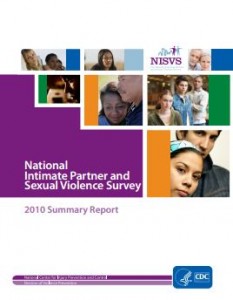 The first set of national prevalence data on intimate partner violence (IPV), sexual violence (SV), and stalking victimization by sexual orientation was released today by the Centers for Disease Control and Prevention (CDC). The study found that lesbians and gay men reported IPV and SV over their lifetimes at levels equal to or higher than those of heterosexuals; with sexual orientation based on respondents’ identification at the time of the survey. The survey also found that bisexual women (61.1 percent) report a higher prevalence of rape, physical violence, and/or stalking by an intimate partner compared to both lesbian (43.8 percent) and heterosexual women (35 percent). Of the bisexual women who experienced IPV, approximately 90 percent reported having only male perpetrators, while two -thirds of lesbians reported having only female perpetrators of IPV.
The first set of national prevalence data on intimate partner violence (IPV), sexual violence (SV), and stalking victimization by sexual orientation was released today by the Centers for Disease Control and Prevention (CDC). The study found that lesbians and gay men reported IPV and SV over their lifetimes at levels equal to or higher than those of heterosexuals; with sexual orientation based on respondents’ identification at the time of the survey. The survey also found that bisexual women (61.1 percent) report a higher prevalence of rape, physical violence, and/or stalking by an intimate partner compared to both lesbian (43.8 percent) and heterosexual women (35 percent). Of the bisexual women who experienced IPV, approximately 90 percent reported having only male perpetrators, while two -thirds of lesbians reported having only female perpetrators of IPV.
The data presented in this report do not indicate whether violence occurs more often in same-sex or opposite sex couples. Rather, the data show the prevalence of lifetime victimization of intimate partner violence, sexual violence and stalking of respondents who self-identified as lesbian, gay or bisexual at the time of the survey and describe violence experienced with both same-sex and opposite-sex partners.
“We know that violence affects everyone, regardless of sexual orientation. This report suggests that lesbians, gay men and bisexuals in this country suffer a heavy toll of sexual violence and stalking committed by an intimate partner.” said CDC Director Dr. Tom Frieden. “While intervening and providing services are important, prevention is equally critical.”
The National Intimate Partner and Sexual Violence Survey (NISVS) is designed to better describe and understand the level of IPV, SV, and stalking victimization in the United States. Using 2010 data from NISVS, this report is the first to provide national data that examines IPV, SV and stalking by sexual orientation. Further research is needed in order to fully understand the experience of interpersonal violence that impact LGB individuals and their communities. This information is critical to informing prevention programs and policies aimed at reducing these types of victimization.
Other key findings include:
- The majority of women who reported experiencing sexual violence, regardless of their sexual orientation, reported that they were victimized by male perpetrators.
- Nearly half of female bisexual victims (48.2 percent) and more than one-quarter of female heterosexual victims (28.3 percent) experienced their first rape between the ages of 11 and 17 years.
CDC will work to create resources to bring attention to these issues within lesbian, gay, bisexual, and transgender communities.











